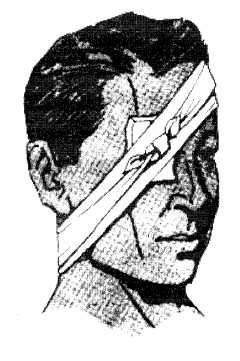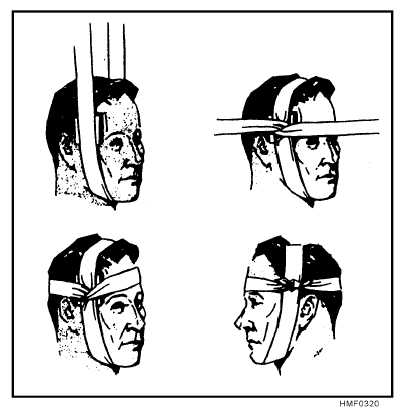middle of a rather wide cravat over the point of the
elbow or knee, and carry the upper end around the
upper part of the elbow or knee, bringing it back to the
hollow, and the lower end entirely around the lower
part, bringing it back to the hollow. See that the
bandage is smooth and fits snugly; then tie in a square
knot outside of the hollow. Figure 3–21 shows the
proper application of a cravat bandage for the elbow or
knee.
Cravat Bandage for Arm or Leg.—The width of
the cravat you use will depend upon the extent and area
of the injury. For a small area, place a compress over
the wound, and center the cravat bandage over the
compress. Bring the ends around in back, cross them,
and tie over the compress. For a small extremity, it
may be necessary to make several turns around to use
all the bandage for tying. If the wound covers a larger
area, hold one end of the bandage above the compress
and wind the other end spirally downward across the
compress until it is secure, then upward and around
again, and tie a knot where both ends meet. Figure
3–22 shows the proper application of a cravat bandage
for the arm, forearm, leg, or thigh.
Cravat Bandage for Axilla (Armpit).—This
cravat is used to hold a compress in the axilla. It is
similar to the bandage used to control bleeding from
the axilla. Place the center of the bandage in the axilla
over the compress and carry the ends up over the top of
the shoulder and cross them. Continue across the back
and chest to the opposite axilla, and tie them. Do not tie
3-11
HMF0319
Figure 3–19.—Cravat bandage for the eye.
Figure 3–20.—Cravat (Modified Barton) bandage for the temple, cheek, or ear.




